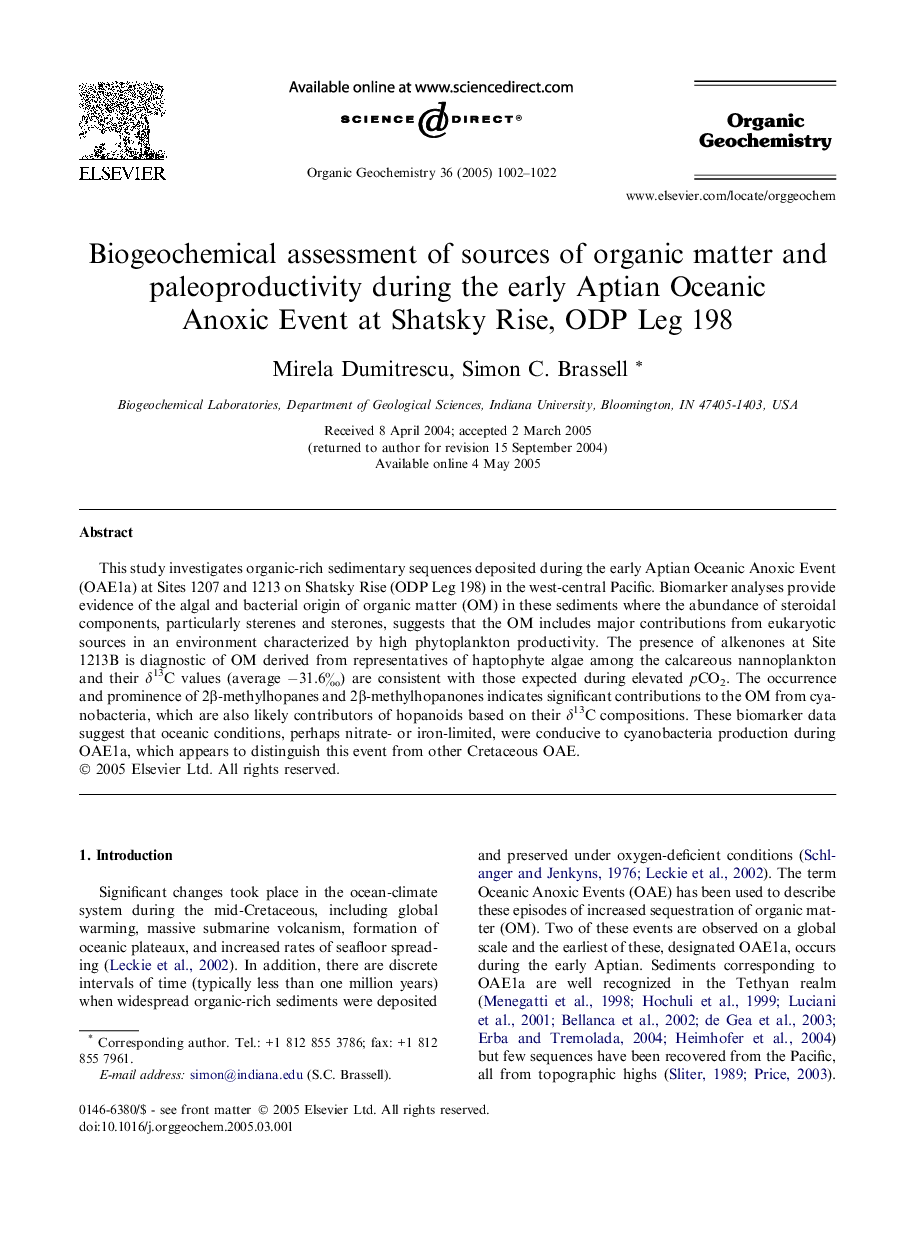| Article ID | Journal | Published Year | Pages | File Type |
|---|---|---|---|---|
| 9556791 | Organic Geochemistry | 2005 | 21 Pages |
Abstract
This study investigates organic-rich sedimentary sequences deposited during the early Aptian Oceanic Anoxic Event (OAE1a) at Sites 1207 and 1213 on Shatsky Rise (ODP Leg 198) in the west-central Pacific. Biomarker analyses provide evidence of the algal and bacterial origin of organic matter (OM) in these sediments where the abundance of steroidal components, particularly sterenes and sterones, suggests that the OM includes major contributions from eukaryotic sources in an environment characterized by high phytoplankton productivity. The presence of alkenones at Site 1213B is diagnostic of OM derived from representatives of haptophyte algae among the calcareous nannoplankton and their δ13C values (average â31.6â°) are consistent with those expected during elevated pCO2. The occurrence and prominence of 2β-methylhopanes and 2β-methylhopanones indicates significant contributions to the OM from cyanobacteria, which are also likely contributors of hopanoids based on their δ13C compositions. These biomarker data suggest that oceanic conditions, perhaps nitrate- or iron-limited, were conducive to cyanobacteria production during OAE1a, which appears to distinguish this event from other Cretaceous OAE.
Related Topics
Physical Sciences and Engineering
Chemistry
Organic Chemistry
Authors
Mirela Dumitrescu, Simon C. Brassell,
